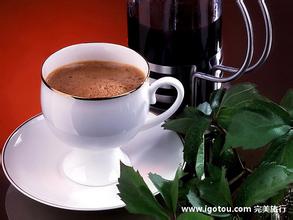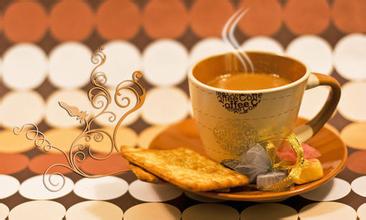Cappuccino Coffee characteristic Flavor description introduction to the Regional treatment method of Manor production
Cappuccino Coffee characteristic Flavor description introduction to the Regional treatment method of Manor production
On the basis of Italian espresso, add a thick layer of foaming milk to become a cappuccino. The quality of espresso can be seen in milk and foam, but it is still an important factor in determining the taste of cappuccino. Pour the partially skimmed milk into a pot, then use a foamer to foam and inflate the milk, and let the milk be as uniform as whipped cream without burning. The cappuccino coffee cup should be warm or the milk foam will spread. You can usually put these cups on the top of the coffee maker to keep warm. Pour the milk and foam on top of the espresso and naturally form a layer, just like wrapping the coffee below. Note that the brewed Italian coffee is about five cents full, and the hot milk that has been foamed is about eight cents full. Finally, you can sprinkle a little cinnamon or chocolate powder and pour the rest of the milk together to make a delicious cappuccino.
The traditional cappuccino is 1/3 espresso, 1/3 steamed milk and 1/3 foamed milk. Cappuccino latte is actually a change in Italian coffee (Italians are indeed fickle), except that the proportion of coffee, milk and milk foam can be changed slightly to 1:2:1.
The strength of stirring is different, the time is different, and the final state of milk foam is also different. After the foam is made, it is poured over the mixture of coffee and milk, so the cappuccino is a bit like the chocolate that Argan often says in Forrest Gump-you don't know what kind of cappuccino you're going to encounter next. What is amazing is that the coffee served in Pierre Cafe, milk foam and coffee can amazingly form the pattern of leaves, and the exquisite shape is unbearable to destroy. In addition to "leaves", heart-shaped and other creative patterns can also be made here.
The Italian coffee machine uses enough pressure to force hot water through the very fine and squeezed coffee powder to absorb the strongest flavor of coffee. When the coffee is dripped into the cup with golden "coffee cream", a cup of Italian espresso (Espresso) is made. The "coffee cream" floating on the black coffee will disperse in a few minutes, but within a few minutes, it can be used to test the quality of this cup of Italian coffee. The coffee cream is too light, too thin or too thick, indicating that the quality of the espresso is not up to standard. On the basis of Italian espresso, add a thick layer of foaming milk to make a cappuccino.

Important Notice :
前街咖啡 FrontStreet Coffee has moved to new addredd:
FrontStreet Coffee Address: 315,Donghua East Road,GuangZhou
Tel:020 38364473
- Prev

Espresso production notes extraction effect taste introduction
Espresso production notes extraction effect taste introduction A single espresso cup volume is usually only 25ml-35ml, according to the length of the extraction stage and the amount of production can also be divided into espresso Ristretto, double espresso doppio/double, long espresso Lungo and standard espresso Normale Espresso. And when they're done, add extra water, and they'll change.
- Next

Washed Arabica Coffee Bean Flavor Description Grind Scale Variety Region Introduction
Shakisso/Shakiso is located in the Guji region of Sidama, south of the Oromia region, next to Sidama and Gedeo. There are many mines in this area, which were used for gold mining in the early days, so there are many potholes in this coffee-growing area. this makes people
Related
- Beginners will see the "Coffee pull flower" guide!
- What is the difference between ice blog purified milk and ordinary milk coffee?
- Why is the Philippines the largest producer of crops in Liberia?
- For coffee extraction, should the fine powder be retained?
- How does extracted espresso fill pressed powder? How much strength does it take to press the powder?
- How to make jasmine cold extract coffee? Is the jasmine + latte good?
- Will this little toy really make the coffee taste better? How does Lily Drip affect coffee extraction?
- Will the action of slapping the filter cup also affect coffee extraction?
- What's the difference between powder-to-water ratio and powder-to-liquid ratio?
- What is the Ethiopian local species? What does it have to do with Heirloom native species?

